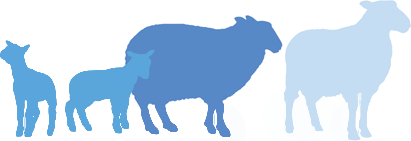
Updated guidance helps to protect sheep flocks this shearing time
13th May 2025
Minimising disease risks posed to your sheep and by your sheep at shearing is critical in maintaining flock health on farm and across the wider industry.
This is the joint message of farming bodies, including the National Sheep Association (NSA), that have collaborated in updating best practice guidelines on shearing for this year’s shearing season.
Sheep farmers are being urged to understand that biosecurity at shearing time hinges on effective communication between different parties.
“There is a joint responsibility between farmers and shearers” says Nerys Wright, independent sheep consultant and technical adviser to SCOPS. “If your shearer doesn’t know that your flock has been affected by a contagious disease, such as scab, they may unknowingly spread it”.
The first step is to be honest with your shearer and tell them if you have scab or something else contagious, adds Nerys. “They might decide to shear your farm last or agree a disinfection plan before they leave”.
Other sheep, shearing equipment, clothing, shearing trailers, and shearers themselves can all present a disease risk unless steps are taken by farmers and shearing contractors to reduce risks and ensure cleanliness.
Farmers are also reminded that applying pour-on products too close to shearing can reduce their effectiveness and absorption and pose health risks to shearers and wool handlers. Recommendations should be followed to ensure safe and responsible handling and application relating to treatments on the wool to avoid unnecessary waste and potential adverse reactions.
Below are some key guidelines to ensure cleanliness and reduce the risk of disease spread during shearing:
- Establish the flock health status before shearing starts and agree on what steps will be taken to safeguard health status and prevent disease spread. Foot rot, particularly contagious ovine digital dermatitis (CoDD), scab, lice, ticks, and caseous lymphadenitis (CLA) should be discussed.
- Disinfect - Shearers should clean and disinfect combs and cutters, shearing trailers, and change clothes (including moccasins) after finishing with each flock. Farmers should assist shearers with cleaning and disinfecting procedures.
- Reduce exposure - Shear younger, fitter sheep first, followed by older and less healthy sheep to reduce the risk of cross-infection.
- Personal hygiene – Everyone handling sheep should wash hands frequently and clean and disinfect boots.
- Clean and disinfect as you go - Sheep with obvious issues that could infect the handpiece, such as orf, scab, or lumps (which could be CLA), should prompt the shearer to stop, change/disinfect their comb and cutter and other items that may have been in contact. Wash hands where necessary.
NSA Chief Executive Phil Stocker comments: "It is absolutely vital that all involved in shearing ensure they are working at the highest possible standard and following best practice guidelines to ensure optimum health and welfare of both sheep and handlers is maintained.”
Updated guidance
Detailed guidance on how farmers and shearers can share responsibility for animal welfare and avoiding disease spread can be found in the ‘Industry Guidance on Shearing’, which has been recently updated to reflect an increased focus on animal health.
By following these guidelines, farmers and shearing contractors can cooperate to significantly reduce the risk of disease spread and ensure a healthier flock during shearing season.
Notes to editors:
- The updated shearing guidelines are a collaborative project involving British Wool, Farmers Union of Wales, the National Association of Agricultural Contractors (NAAC), National Farmers Union (NFU), NFU Cymru, NFU Scotland, and the National Sheep Association (NSA).

